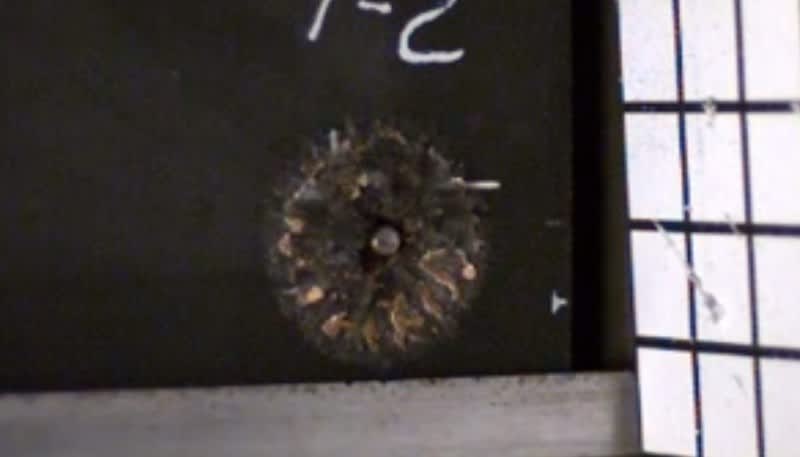Video: Researchers Develop Foam That Obliterates Bullets
OutdoorHub Reporters 04.08.16

Researchers at the North Carolina State University have released a dramatic video that showed a bullet completely shattering after striking a lightweight metal foam. At only about an inch thick and a fraction of the weight of armor plating, the composite metal foam (CMF) has shown some impressive results. With further development, researchers at university speculate that the foam can be used for highly advanced body and vehicle armor, as well as shielding against radiation. The foam is currently being developed and studied by Afsaneh Rabiei, a professor of mechanical aerospace engineering.
“The video seen here shows a composite armor made out of her composite metal foams,” the university stated in a press release. “The bullet in the video is a 7.62 x 63 millimeter M2 armor piercing projectile, which was fired according to the standard testing procedures established by the National Institute of Justice (NIJ). And the results were dramatic.”
You can watch a short test video below:
Modern bullet resistant body armor usually consists of metal or ceramic plates along with tightly-woven fiber layers to reduce the damage caused by a bullet—even ones that do not penetrate the armor. The most well known material for these vests is Kevlar, a synthetic fiber that was originally designed for building lightweight, but strong, tires. With additional development, composite metal foam could very well be the next step in personal protection.
“We could stop the bullet at a total thickness of less than an inch, while the indentation on the back was less than 8 millimeters,” Rabiei says. “To put that in context, the NIJ standard allows up to 44 millimeters indentation in the back of an armor.”
Just like Kevlar, Rabiei says that protection against small arms is not the only use for the foam. The same protective properties can be applied to vehicles on a larger scale, or even for the construction of space-faring vehicles and in nuclear facilities. Rabiei previously discovered that the material was exceptionally effective at shielding against X-rays, gamma rays, and neutron radiation. Composite metal foam also has higher tolerances for fire and heat.
That has lead some to speculate: are we looking at the next breakthrough in armor? What do you think?

